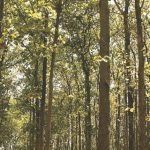PERFECT EARTH PROJECT
Edwina von Gal’s Perfect Earth Project
https://perfectearthproject.org
Inspiration strikes in strange places. For Edwina von Gal, an East Hampton, N.Y.-based landscape designer known for collaborations with architects and artists such as Maya Lin, Annabelle Seldorf, and Richard Serra, her a-ha moment happened in 2012 in a dental office.
“I was visiting my dentist, and he told me he wanted to stop using chemicals on his lawn because he lived near the water and was worried about runoff,” she begins. He asked von Gal, who specializes in self-sustaining landscapes, where he should go for advice on pesticide-free lawn maintenance. She was stumped. “I never use chemicals in my projects—I started gardening in the late 60s, at the time of the Whole Earth Catalog and the organic movement,” she says. “But I could not recommend one place for him to go.”
So, she created one. Enter Perfect Earth Project, a non-profit that not only educates about the health dangers of garden chemicals to people and the planet, but also offers toxin-free alternatives that can provide equally beautiful results.
For von Gal, an environmental approach is a matter of common sense. If people are concerned about pesticides in food, making sure their fruits and vegetables are organic and sustainably grown, why are they pouring synthetic substances onto the lawns where their children and pets play?
Through Perfect Earth, von Gal is showing there is another way. With the permission of her clients, she has practiced the organization’s suggested techniques on their properties, with no compromise of quality or design. She has also partnered with local schools, land trusts, and health institutions—including Southampton Hospital—to demonstrate the approach and its merits to the larger public.
Von Gal believes landscape design should entail a “casual coexistence” between humans and nature—a paradigm shift from the prevalent, post-World War II view of beating the environment into manicured submission. Part of this is just ensuring your property is part of a larger ecosystem. This can be as simple as using compost rather than fertilizer in your garden (the latter can add too much acid to the soil); leaving grass clippings on the lawn so that they can disintegrate into nutrients for other greenery; and even judiciously mixing species of plants and trees so serve as natural pest management.
True, these methods are more complicated than dumping a premixed bag of something on you lawn. But “it is also more complicated to be a good parent, or to read the ingredients on your food so that you can make smart choices,” von Gal says. Her work is proof positive that you will get better results if you make the effort. “It’s a question of commitment and consciousness,” she explains. “What does it say about us if we start out gardening by thinking how to kill things rather than bring them to life?”




